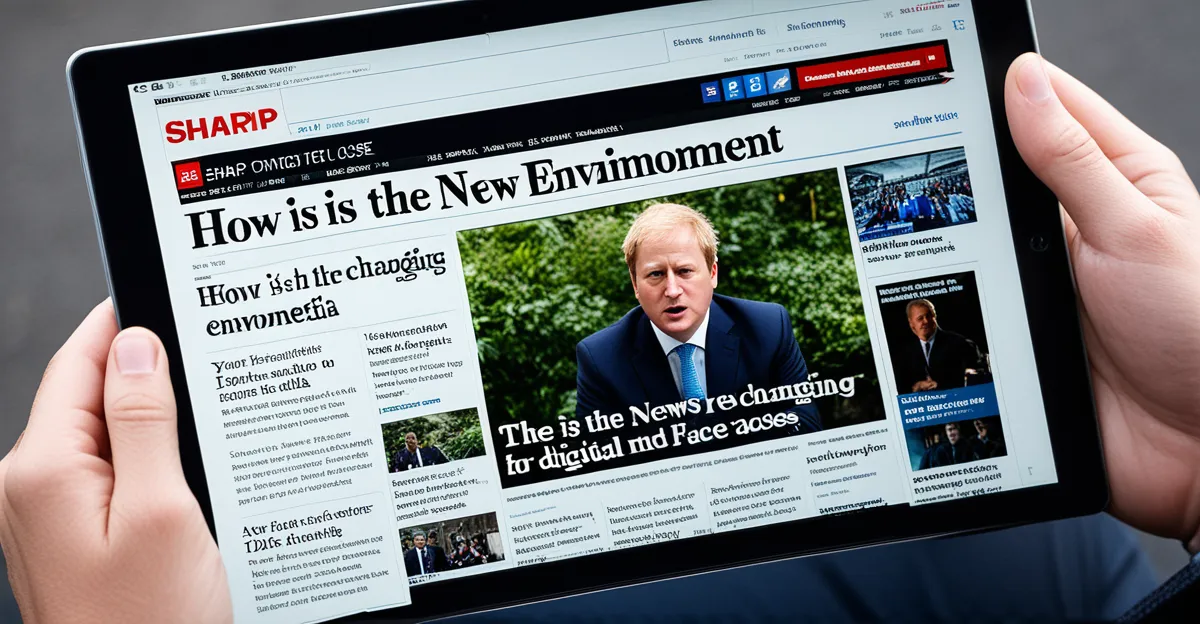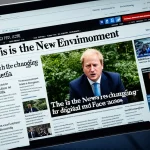Digital Transformation of the UK’s News Landscape
The UK news media evolution has been marked by a profound shift from traditional print and broadcast formats to digital platforms. This digital transformation is driven by several key factors, including advances in technology, changes in audience behaviour, and the economic pressures facing conventional media outlets. Digital consumption allows for faster, more interactive engagement, prompting many established news organisations to re-evaluate and adjust their distribution methods.
Statistics illustrate this news industry shift vividly. Recent data shows a significant rise in digital news consumption, with a majority of UK audiences accessing news via smartphones and online sources rather than newspapers or TV. This trend underscores how digital platforms have become primary conduits for news, encouraging newsrooms to invest heavily in online content, multimedia storytelling, and real-time updates.
Have you seen this : How is the UK transportation sector innovating?
As part of this transformation, media organisations have embraced social media integration and mobile-friendly formats to meet audience demands. The acceleration of digital adoption has generated new business models, including subscriptions and paywalls, to supplement traditional advertising. Overall, the UK’s news landscape continues to evolve rapidly, shaped decisively by its digital future.
Changing News Consumption Habits
Digital news consumption in the UK has surged, driven by rapid shifts in audience behaviour and evolving UK media trends. Smartphones and tablets now dominate access, enabling on-demand news that fits busy lifestyles. According to recent studies, over 70% of UK adults prefer to read news on mobile devices, a clear indicator of this profound digital transformation.
Also to see : What are the future prospects for UK agriculture in a changing climate?
A key facet of this evolution is changing demographics: younger generations favour brief, interactive content over long-form print, reshaping editorial priorities. Older audiences, however, are increasingly online, broadening the digital reach. This diverse consumption pattern demands flexible formats—from video clips and podcasts to social media posts—enhancing overall engagement.
These changes have notable consequences for news engagement and trust. While digital platforms boost immediacy and interactivity, they also present challenges in verifying authenticity, impacting public confidence. Publishers respond by integrating fact-checking and transparent sourcing to rebuild trust.
The news industry shift thus reflects broader societal changes: technology adoption merges with evolving expectations. Audiences want timely, accessible, and reliable news tailored to their preferences. Meeting this demand requires continuous innovation in content delivery, blending speed with quality to sustain and grow readership across the UK’s dynamic media environment.
Digital Transformation of the UK’s News Landscape
The UK news media evolution signals a decisive break from traditional publishing toward fully embracing digital platforms. This digital transformation stems largely from technological innovation, economic pressures, and changing consumer needs. Notably, the widespread availability of high-speed internet and smartphones has accelerated digital adoption. News outlets leverage these changes for faster, more interactive content, improving user engagement.
Recent statistics highlight this news industry shift: digital-only news consumption in the UK has soared, with over 60% of audiences accessing news primarily online. Print circulation sharply declined, pushing publishers to invest in digital infrastructure and content strategies. This shift also reflects a broader media environment where immediacy and multimedia storytelling are essential.
Key drivers behind this transformation include advances in mobile technology, the rise of social media platforms as news vehicles, and changing audience behaviour demanding instant news access. Moreover, economic necessity propels outlets to innovate, adopting subscription models and paywalls to offset the decline in traditional advertising revenue.
The digital transformation of UK news is thus a multifaceted phenomenon. It not only alters how news is delivered and consumed but also redefines the business models sustaining journalism in the UK’s evolving digital ecosystem.
Digital Transformation of the UK’s News Landscape
The UK news media evolution has undergone a marked transition from print and broadcast formats to fully embracing digital platforms. This digital transformation is driven by advances in internet infrastructure, widespread smartphone adoption, and shifting consumer demands for immediacy and convenience. As a result, traditional news outlets face pressure to innovate rapidly or risk obsolescence.
Statistical data illustrates this dynamic news industry shift: over 60% of UK audiences now primarily consume news digitally, with print circulation declining sharply. Mobile devices serve as the predominant means of access, enabling constant connectivity and the ability to engage with multimedia content. Platforms such as web portals, apps, and social media have become essential components in news distribution strategies, reflecting changing audience behaviour.
Key drivers accelerating adoption include technology improvements, evolving revenue models like subscriptions, and the necessity to reach diverse demographic groups. Digital content allows for real-time updates, interactive storytelling, and tailored experiences, enhancing user engagement compared to static traditional formats. The UK news media evolution thus represents a profound recalibration of how news is produced, delivered, and monetized—underlining the central role of digital innovation in the contemporary news landscape.
Digital Transformation of the UK’s News Landscape
The UK news media evolution reflects a decisive shift from traditional print and broadcast formats to digital platforms. This digital transformation is propelled by technological advancements such as faster internet, smartphone ubiquity, and the ascent of social media networks. These factors have redefined how audiences consume news, triggering a profound news industry shift affecting content creation, distribution, and business models.
Recent statistics underscore this trend: over 60% of UK audiences primarily access news through digital means, with mobile devices dominating this consumption. The sharp decline in print circulation has accelerated publishers’ pivot to digital-first content strategies. News organisations invest heavily in multimedia storytelling, real-time updates, and interactive formats to capture digital-savvy consumers.
Key drivers accelerating this shift include improved digital infrastructure, changing audience expectations for immediacy and engagement, and economic pressures pushing outlets towards subscription models and paywalls. The UK news media evolution marries technology with user demands, fostering a dynamic ecosystem where agility and innovation determine success.
This news industry shift not only transforms how news is delivered but redefines the sustainability of journalism. Digital platforms offer opportunities for wider reach but require newsrooms to embrace continual adaptation and fresh strategies to thrive in the evolving UK media landscape.
Digital Transformation of the UK’s News Landscape
The UK news media evolution is characterised by a clear move from traditional print and broadcast models to dynamic digital platforms. This digital transformation is driven primarily by technological progress, including widespread high-speed internet and smartphone adoption. These advancements enable more immediate and interactive news consumption, aligning with changing audience expectations.
A significant news industry shift also stems from economic factors; declining print revenue has urged publishers to innovate with digital-first content strategies. Subscription and paywall models now complement advertising, helping to sustain revenue streams. These new business approaches are essential in an increasingly competitive digital landscape.
Recent statistics highlight this transformation vividly: over 60% of UK consumers now mainly access news digitally, predominantly via mobile devices. This surge in digital transformation demonstrates the imperative for media organisations to prioritise user-friendly apps, multimedia storytelling, and real-time updates.
Moreover, the UK news media evolution reflects broader societal changes as audiences demand personalised, accessible, and trustworthy news. The ongoing news industry shift affects all aspects—from content creation to distribution—signalling a permanent realignment of the UK news ecosystem around digital innovation.








